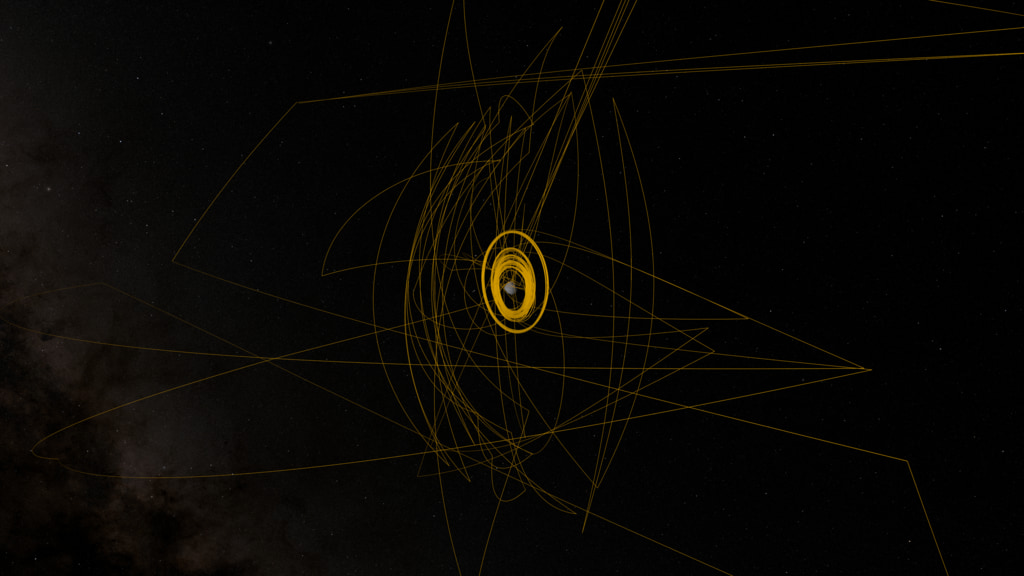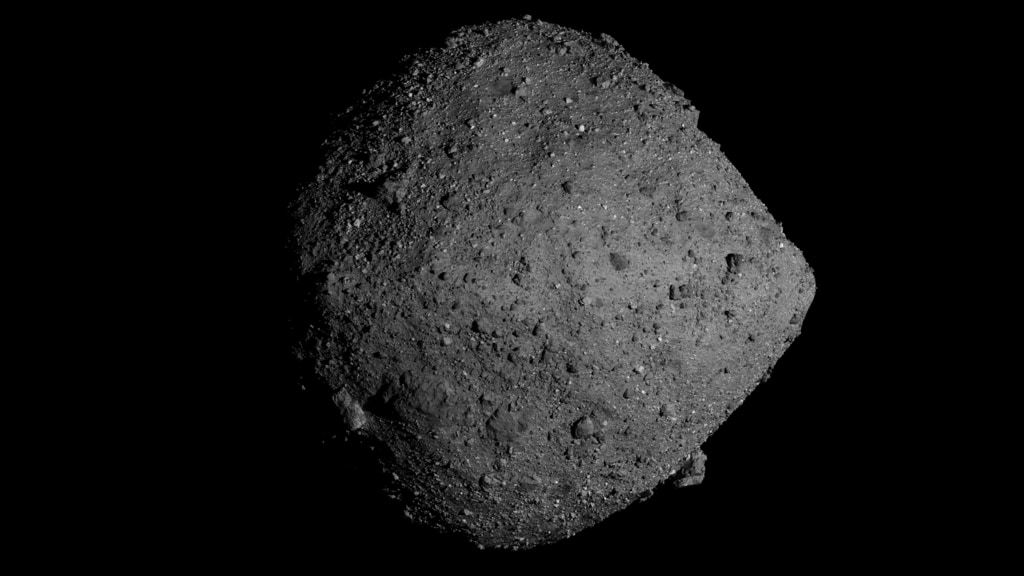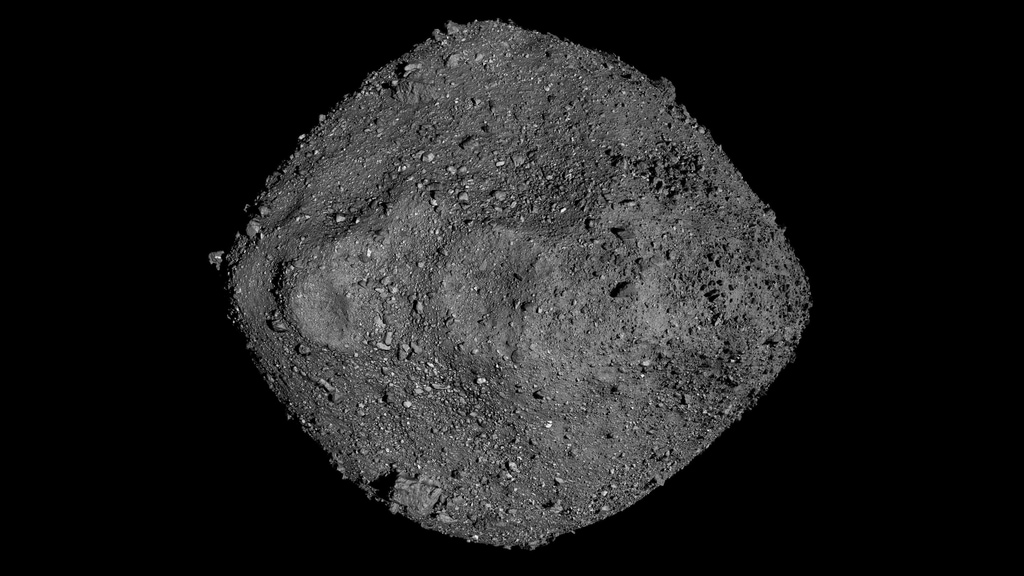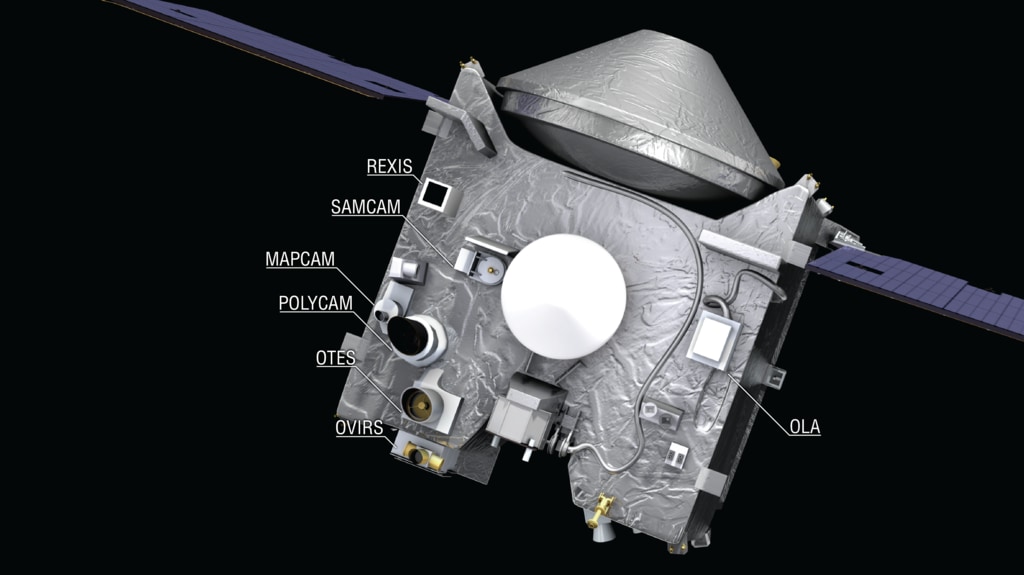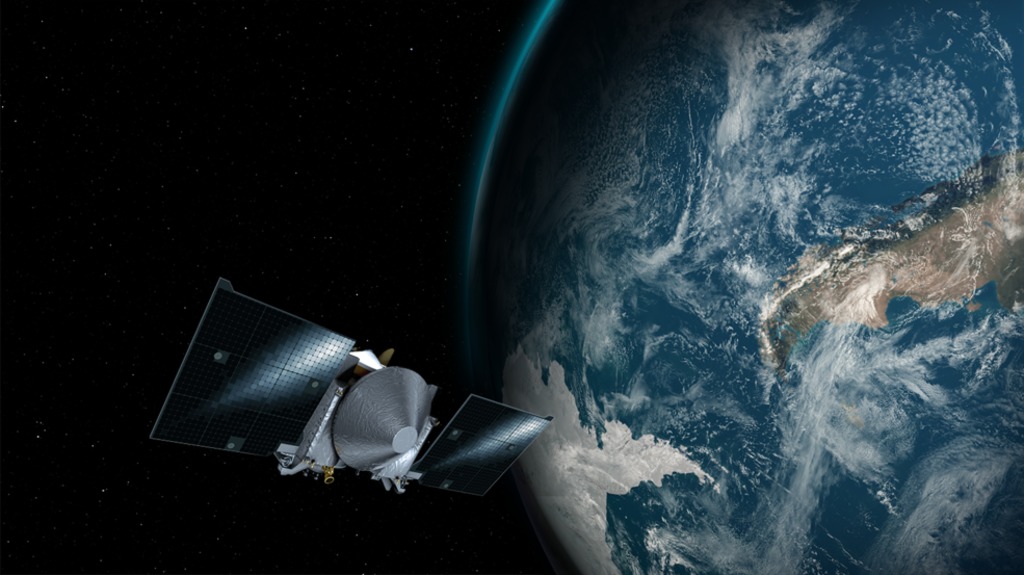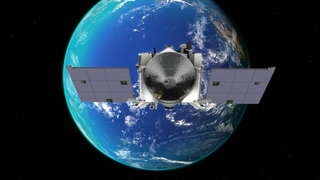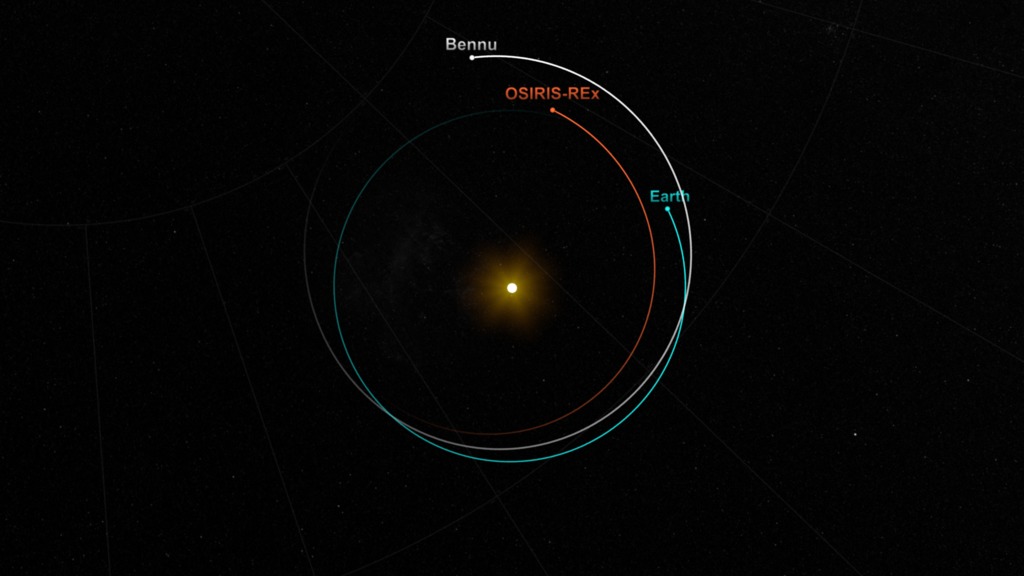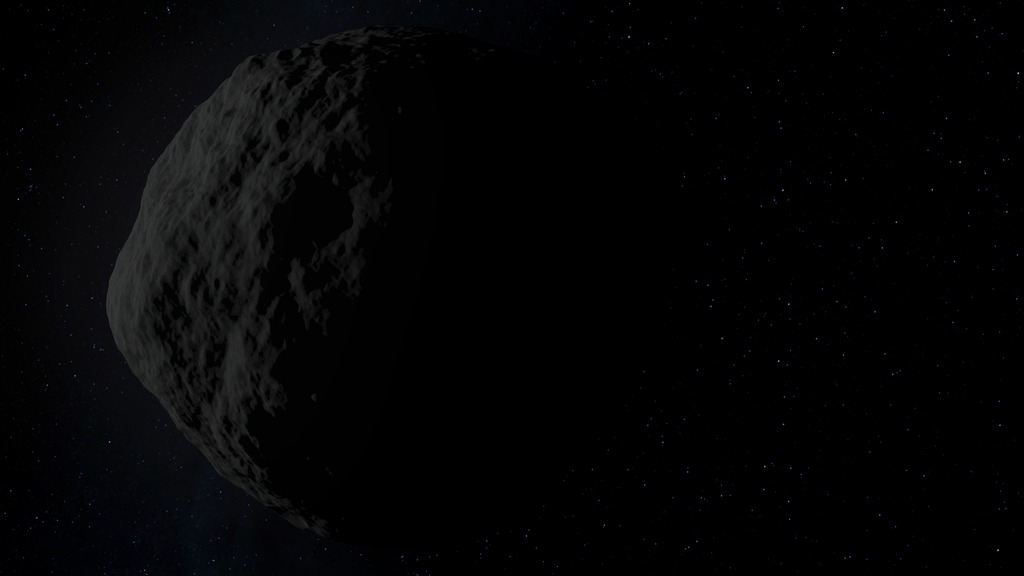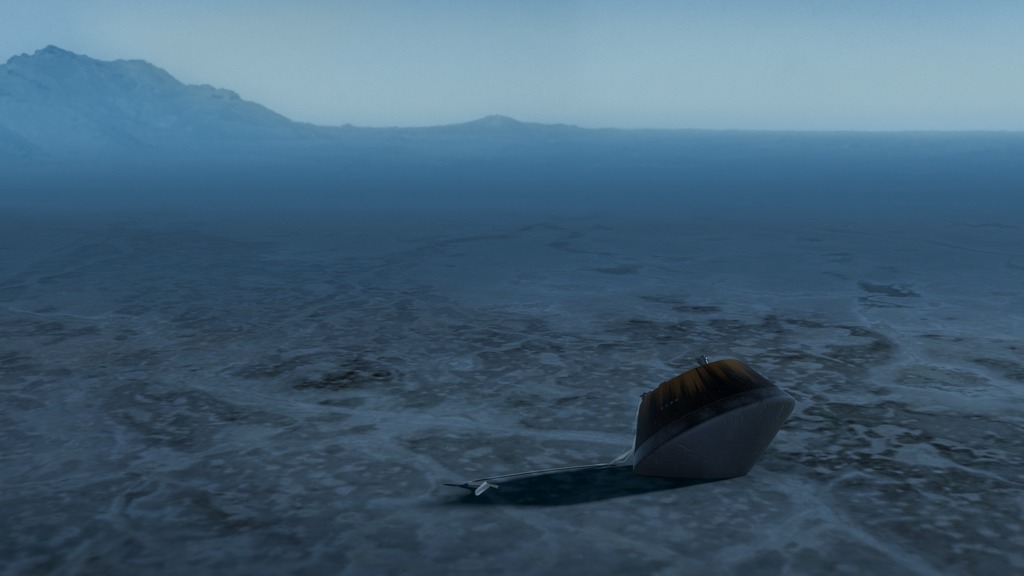A newer version of this visualization is available.
OSIRIS-REx - Asteroid Bennu Sample Site Finalists
The visualization begins with a rotating 3D model representation of the asteroid Bennu, created using data from the OSIRIS-REx Laser Altimeter (OLA) instrument. Four candidate sample sites (with labels) are highlighted with PolyCam images.
Watch this video on the NASA Goddard YouTube channel.
OSIRIS-REx is a mission to study and map near-Earth asteroid Bennu. Its primary science objective is to collect a sample of Bennu in mid 2020 and return it to Earth in late 2023. In preparation, mission planners have identified four candidate sample sites on Bennu's rocky surface where OSIRIS-REx could briefly touch down to collect its sample. The mission will down-select to the final two sites – a primary and a backup – in December 2019. Like the mythological Bennu bird for which the asteroid is named, all of the candidate sample sites refer to birds that can be found in Egypt.
Learn more about the candidate sample sites on Bennu.

An animated GIF of the asteroid Bennu with labels of the four candidate sites.
UNLABELED VERSION
The visualization begins with a rotating 3D model representation of the asteroid Bennu, created using data from the OSIRIS-REx Laser Altimeter (OLA) instrument. Four candidate sample sites are highlighted with PolyCam images.

Print resolution (16k) still image of the candidate sample sites with labels.

Print resolution (16k) still image of the candidate sample sites without labels.

Pictured are the four candidate sample collection sites on asteroid Bennu selected by NASA’s OSIRIS-REx mission. Site Nightingale (top left) is located in Bennu’s northern hemisphere. Sites Kingfisher (top right) and Osprey (bottom left) are located in Bennu’s equatorial region. Site Sandpiper (bottom right) is located in Bennu’s southern hemisphere. In December 2019, one of these sites will be chosen for the mission’s touchdown event.
Credit: NASA/Goddard/University of Arizona

Candidate Bennu sample site - Osprey
Instrument Used: OCAMS (PolyCam)

Candidate Bennu sample site - Kingfisher
Instrument Used: OCAMS (PolyCam)

Candidate Bennu sample site - Nightingale
Instrument Used: OCAMS (PolyCam)

Candidate Bennu sample site - Sandpiper
Instrument Used: OCAMS (PolyCam)
Visualization of a rotating 3D model representation of the asteroid Bennu, created using data from the OSIRIS-REx Laser Altimeter (OLA) instrument.

Global map of asteroid Bennu, showing the locations of the final four candidate sample sites.
Credit: NASA/Goddard/University of Arizona

Candidate Sample Site Labels
For More Information
See the following sources:
Credits
Please give credit for this item to:
NASA's Scientific Visualization Studio
Data provided by NASA/University of Arizona/CSA/York University/MDA.
-
Animator
- Kel Elkins (USRA)
-
Producers
- Dan Gallagher (USRA)
- James Tralie (ADNET Systems, Inc.)
-
Public affairs officers
- Erin Morton (The University of Arizona)
- Nancy Neal-Jones (NASA/GSFC)
Release date
This page was originally published on Monday, August 12, 2019.
This page was last updated on Sunday, February 16, 2025 at 10:35 PM EST.
